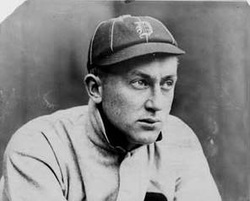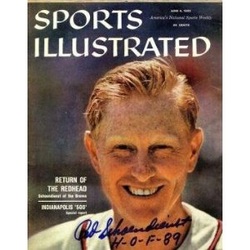Unless there was a dynasty going on, it was more of a crap shoot to predict a team that would win a pennant before divisional play. Many teams were in the mix year after year and sometimes it would come down to just a game or two separating two very good teams. Unfortunately, just one team would play postseason baseball, while another deserving team (in some cases teams that won over 100 games) would be finished playing for the season. That proverbial crap shoot was alleviated with the start of divisional play as two teams would be guaranteed to make the postseason from each league each season.
The 1970's represented a decade of very good teams, albeit a short list. The Baltimore Orioles won the World Series in 1970, won the AL Pennant in 1971, the AL East in 1973 and 1974 and the AL Pennant again in 1979. The Oakland Athletics won three consecutive World Series from 1972-1974 after winning the AL West division in 1971. Cincinnati Reds won consecutive World Series in 1975 and 1976, a feat duplicated by the New York Yankees in 1977 and 1978. Both the Reds (1970, 1972) and Yankees (1976) won additional league pennants in the decade. The Pittsburgh Pirates won it all in 1971 and 1979 and also won the NL East in 1970, 1972, 1974, and 1975. The Los Angeles Dodgers won three NL Pennants (1974, 1977, 1978). And finally, both the Philadelphia Phillies and Kansas City Royals won three consecutive division titles from 1976-1978. That means out the 40 possible division titles from 1970-1979, a total of eight teams won an amazing 30 of them! Those same eight teams won all ten World Series and managed to also represent their respective league in the World Series eight times.
The point is, the 1970s were filled with quality teams; perhaps the league could be considered a little bit top heavy. The 1980s started out with the Phillies and Royals getting to their much deserved World Series, then the interesting split season, which re-matched the Yankees and Dodgers. 1982 seemed like the beginning of a new time, with the California Angels, Milwaukee Brewers, St Louis Cardinals, and Atlanta Braves all making the postseason with only the Angels being there since the end of the 1960's. And the Angels won their first and only division title just a couple years before in 1979. As the 1983 season approached, the new revolution had started. Were the Angels, Brewers, Cardinals, and Braves ready to build on superb seasons? And what about the teams getting to the postseason in 1981, mainly the Montreal Expos and the Houston Astros, two teams that had been right on the borderline of making a serious run? In addition, teams like the Reds, Yankees, Athletics, Phillies, Royals, and Dodgers had not gone away. In fact, a couple of the teams completely turned their teams over in time to make a serious run in the early 1980's. Remember, the Reds had more wins than anybody in baseball in 1981 but could not make the postseason because of the split season.
One team determined to make up for a disappointing 1982 result was the Baltimore Orioles. Their longtime manager Earl Weaver had decided to retire, leading top coach and former San Francisco Giants manager Joe Altobelli to take over the team. The Orioles had won 94 games in 1982, though that was not enough to catch the first place Brewers. The Yankees had a ton of talent and were adding players left and right. Even the Red Sox, a team who had struggled to gain any sort of consistency since its American League Pennant in 1975, were treading in the right direction. Of course, it was the Orioles who would emerge out of the bunch, winning 98 games and the American League East title.
While the AL East looked very competitive, the same cannot be said about the West division. The Angels, who seemed to be on their way after an exceptional 1982 season, won 23 less games in 1983. The Royals and Athletics had fallen off and neither the Twins nor Mariners were ready to compete yet. The Texas Rangers were interesting. They had a core group of young players led by George Wright and Pete O'Brien and a makeshift pitching staff featuring solid veterans like Charlie Hough, Frank Tanana, Mike Smithson, Danny Darwin, Rick Honeycutt,and Dave Stewart- the latter two traded for each other during the season. Led by a series of veterans themselves, the Chicago White Sox quickly realized they had a good path to the AL West title. Starting pitchers LaMarr Hoyt and Richard Dotson combined for 46 wins. Carlton Fisk, Jerry Koosman, Dick Tidrow, Greg Luzinski, and Tom Paciorek all were major contributors to a team not expected to be as good as the Royals, Angels, and even the Rangers. The White Sox would win the division by 20 games, their first postseason appearance since 1959.
The Phillies came into the season off a great run that started in 1976. They would win three consecutive NL East titles, then win the World Series in 1980. After a NLDS loss to the Expos in 1981, the Phillies won 89 games in 1982, falling three games short of the eventual World Series Champion Cardinals. However, it seemed as if the Phillies had made the wrong decision to bring in veteran future Hall of Famers Joe Morgan and Tony Perez. The team sat just a game over .500- 85 games into the season. After General Manager Paul Owens decided to return as the field manager, the team went 17 games over.500 and won the NL East with 90 wins. John Denny won the Cy Young and Mike Schmidt hit 40 home runs.
In 1981, the Dodgers rode Fernando- mania with the dominance of the lefty Valenzuela. By 1983, the team had moved on from three quarters of their star infield with Steve Garvey, Davey Lopes, and Ron Cey at this point playing for other teams. The Braves were looking pretty solid and so were the Astros. In the end, it was the Dodgers with third baseman Pedro Guerrero besting the Braves by three games and the Astros by six.
As we know now, the Phillies beat the Dodgers in 4 games (3-1) and the Orioles did the same to the White Sox. The Orioles won a very anti- climatic World Series against the Phillies, finishing them off in five games (4-1). The thing that stands out most from these postseason is there was no momentum towards the following seasons. Even though the Dodgers won the World Series in 1988, they did it with a completely different team. The Orioles won 85 games in 1984 and 83 in 1985, but fell off drastically after that and would not make the postseason again until 1996. The Phillies got a couple more good seasons out of Steve Carlton and Schmidt, including a 1986 MVP, but would have to completely change the makeup of their team. That resulted in their next postseason appearance which was in 1993, though the team did not build on its World Series appearance in the subsequent seasons. The White Sox would decide to fire Tony LaRussa as manager in 1986, proof that Hawk Harrelson was a much better broadcaster than GM. The White Sox would appear in the same postseason as the Phillies in 1993, but lost to the Toronto Blue Jays in the ALCS.
Every year teams surprise and exceed what the preseason expectations are. And it is also true that we see teams all the time that are pretty much giving it their last shot to win, knowing (though not admitting) that their future is now. What the 1983 baseball season showed us was that teams that had success in the past can give it one more shot. The Phillies and Dodgers showed us that. The fact that three of the four teams in the 1983 postseason would not make it back for at least ten years says a lot. In fact, that has not happened to this day, even with the expanded playoff format increasing the amount of playoff teams first to four in each league and now five.



 RSS Feed
RSS Feed
